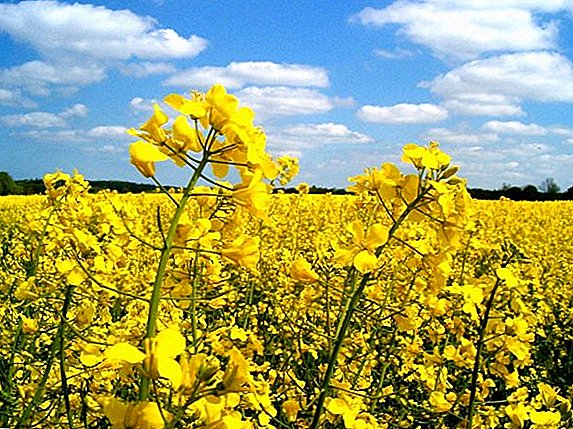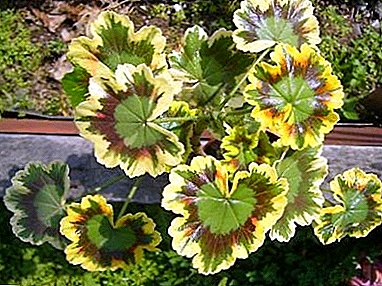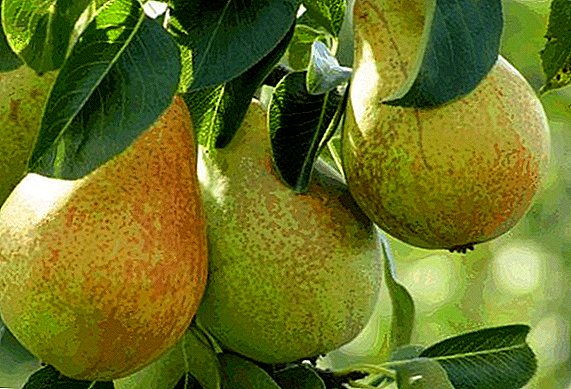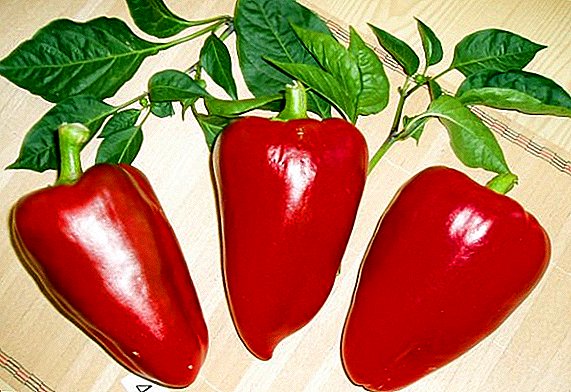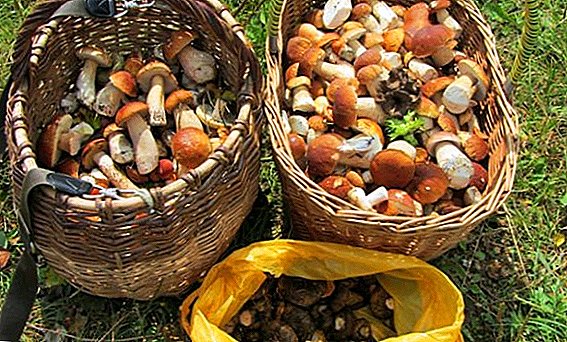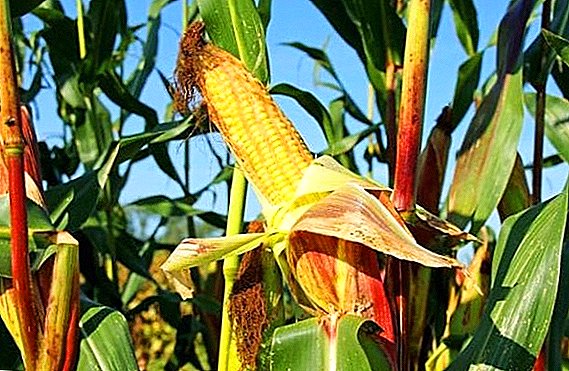 Corn is one of the most common plants that are grown in agriculture on five continents. In addition, this culture - one of the most ancient and used in food. For example, the average resident of Mexico eats about 90 kg annually, and a resident of the United States - 73 kg. Maize, as this product is called in many countries, is eaten not only by people, it is also fed to livestock. It contains a large amount of starch and a number of useful and nutrients. Consider ways of harvesting corn for grain and silage, each of which has its own nuances.
Corn is one of the most common plants that are grown in agriculture on five continents. In addition, this culture - one of the most ancient and used in food. For example, the average resident of Mexico eats about 90 kg annually, and a resident of the United States - 73 kg. Maize, as this product is called in many countries, is eaten not only by people, it is also fed to livestock. It contains a large amount of starch and a number of useful and nutrients. Consider ways of harvesting corn for grain and silage, each of which has its own nuances.
Impact of timing on quality and quantity
The quality and volume of harvested corn for grain or silage will be affected by the time of harvesting and the machinery used for this. From these factors will depend on such parameters as:
- grain loss volumes;
- the number of damaged grains;
- moisture blanks.
Did you know? Corn is not only a food product for people and animals. It is also used in the manufacture of paints, plaster, plastic, glue, alcohol, cosmetics.
There are developed recommendations for the optimal timing and duration of harvesting corn, compliance with which can significantly reduce losses (they will not exceed 2-2.5%) and achieve a high quality product.  Especially significant will be the loss during freezing of cereal crops and at the same time raising the humidity. The grain picks up moisture, the cobs become heavy, and, accordingly, the stem of the plant bends. As a result, we have lodged plants or sagging cobs, which are difficult to remove by technique. And the product itself is spoiled, catching diseases in such favorable conditions.
Especially significant will be the loss during freezing of cereal crops and at the same time raising the humidity. The grain picks up moisture, the cobs become heavy, and, accordingly, the stem of the plant bends. As a result, we have lodged plants or sagging cobs, which are difficult to remove by technique. And the product itself is spoiled, catching diseases in such favorable conditions.
In this way, if the harvest time is late, grain losses will increase three to four times. In addition, there will be a large amount of impurities, spoiled grains. Such material will no longer be suitable for landing, and its marketability will be much lower.  An important condition for collecting high-quality harvest is the right technique. First of all, it is necessary to correctly adjust the cutting height of the stems - it is necessary that it be adjusted at the level of 10-15 cm from the ground. Such a setting will prevent the spread of the pest of the corn moth.
An important condition for collecting high-quality harvest is the right technique. First of all, it is necessary to correctly adjust the cutting height of the stems - it is necessary that it be adjusted at the level of 10-15 cm from the ground. Such a setting will prevent the spread of the pest of the corn moth.
Learn how to properly collect winter wheat, rhubarb, buckwheat, beets and carrots.
Farmers, in order to remove this grain crop, resort to the use of combine harvesters (of all types), which have a tangential or axial threshing apparatus.
Corn is harvested for grain by two methods:
- cutting the cob (with or without cleansing);
- threshing grain.
 Also, the header can be replaced with 4-8 rows of corn harvesting devices, allowing you to remove the cobs and throw the straw on the field in a ground form. This is achieved by the work of cutting tools under the combine.
Also, the header can be replaced with 4-8 rows of corn harvesting devices, allowing you to remove the cobs and throw the straw on the field in a ground form. This is achieved by the work of cutting tools under the combine.In the cob, the grain crop is harvested for food and seeds, in grains - for fodder.
The silage plant is harvested by a forage harvester that separates and shreds the stems and plunges them into the vehicle. 
When to harvest corn
The timing and duration of the harvest of the grain plant, the process of harvesting and the equipment used will vary depending on whether it is going to be harvested for grain or silage.
For grain
With this method of harvesting, the main goals are to lose and damage the grain material as little as possible, as well as to harvest the corn with the largest percentage of dry matter. This can be ensured by:
- timely cleaning;
- planting hybrids that are resistant to lodging;
- the use of high-quality and properly tuned technology.
Duration of cleaning should be no more than two weeks. Therefore, in order to avoid shortages, as a rule, hybrids that have different ripening terms are sown.
Important! Do not leave corn on the field until late autumn. This will lead to the fact that it will be more infected with fungal diseases, and the seeds will lose their ability to germinate when exposed to frost.Crop on the cob clean combines "Khersonets-7", "Khersonets-200", KSKU-6, KOP-1. Also, greater efficiency can be achieved when used for harvesting corn header. In one day, one combine can remove up to 5 hectares of planting. Agrotechnical requirements for harvesting grain:
- cutting height - 10-15 cm;
- completeness of collecting cobs without cleaning - 96.5%;
- broken cobs - no more than 2%;
- the level of purification cobs - 95%;
- grain cleaning level - 97%;
- loss of grain for the combine - 0.7%;
- Nedomolot - 1.2%;
- crushing - 2.5%;
- the presence of grain in the silo is 0.8%.
On silo
Cleaning for silage also depends on the extent to which the grains matured. Green mass will be the most valuable and nutritious, skewed when the corn seeds have reached the degree of waxy maturity at the very end of the milky-waxy stage. Leaf moisture at this time will be at the level of 65-70% (grains - 35-55%), they will have moderate acidity and sufficient sugar content. Grain in this period will accumulate the maximum amount of starch.  At earlier cleaning in a silo there will be much less nutrients. With late mowing, the silage mass will become hard and dry. And when the content in the green mass of dry matter more than 30% of the silage will be poorly absorbed by the cattle. Whereas, for example, at the stage of waxy maturity, the green mass will be able to provide cattle with energy by 20% and not affect the productivity of milk production.
At earlier cleaning in a silo there will be much less nutrients. With late mowing, the silage mass will become hard and dry. And when the content in the green mass of dry matter more than 30% of the silage will be poorly absorbed by the cattle. Whereas, for example, at the stage of waxy maturity, the green mass will be able to provide cattle with energy by 20% and not affect the productivity of milk production.
Important! If the grain crop is frozen, then it is necessary to remove the green mass to silage for five days. In the future, it will be unsuitable for these purposes.Harvesting maize for silage can be done with a KSS-2.6 type combine with the use of an additional PNP-2.4 device with a pick-up hung on it, picking up rolls and grinding. In a single pass, a self-propelled combine produces mowing, chopping greens and loading it into a vehicle.
Agrotechnical requirements for harvesting silage:
- cutting height - 10 cm;
- loss of green mass for the combine - 1.5%;
- the number of particles of the desired length is 70%.
Storage conditions
There are two methods for storing corn:
- on the cob;
- in the grain.
Before placing the cobs for storage, they must be carefully sifted, the leaves removed and dried well to a moisture content of 13-14%.
Granules for storage are poured into plastic containers, cardboard boxes or fabric bags. When placed in bags, it is important to ensure that they are not saturated with moisture, otherwise the seeds will lose their ability to germinate. Corn with this method is stored in unheated premises. Shelf life is two years. Its humidity should be no more than 13%.
Familiarize yourself with the methods of storing other popular crops: carrots, onions, tomatoes, garlic, apples, cucumbers, potatoes and beets.
You can also store grains in canned form, because in this case they do not lose their useful properties and nutritional value. In this way, you can store grain with a moisture content of 30%.
Did you know? Corn can grow only a man - it is planted with seeds. There is no such plant in the wild..At home, the best place to store whole corn is a fridge and freezer. In bags in the refrigerator, the cobs are well peeled and presoaked in water salted and acidified with lemon juice for 10 days.
In the freezer, the cobs are placed after pre-treatment - they are dipped alternately in ice and hot boiled water for two or three minutes. Then they are well dried and wrapped with cling film. So the corn will contain the greatest quantity of nutrients and useful substances and can be stored all winter period.
Corn is an important product in human and animal nutrition. To get high-quality, nutritious food and feed, you need to clean this grain crop in the proposed terms and not go beyond the recommended long-term harvesting framework.



